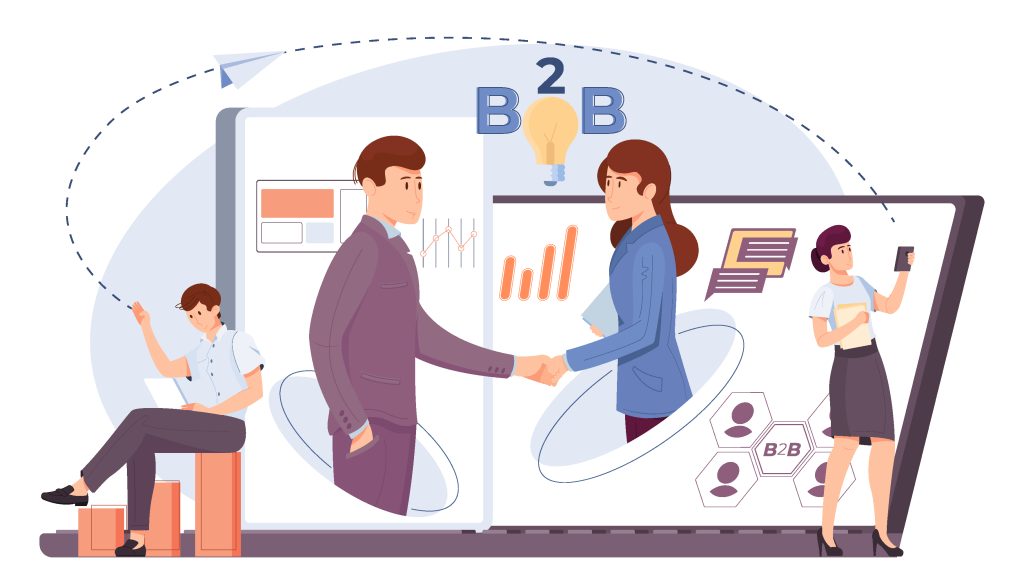
How to Conduct Effective B2B Market Research: A Comprehensive Guide
In today’s competitive business landscape, conducting effective B2B (business-to-business) market research is essential for success. Whether you’re a seasoned professional or a newcomer to the B2B arena, staying ahead of industry trends, understanding customer needs, and making data-driven decisions are paramount. In this comprehensive guide, we’ll explore the intricacies of conducting impactful B2B market research to help you gain a competitive edge in the marketplace.
Chapter 1: Understanding the Fundamentals of B2B Market Research
Before diving into the nitty-gritty of B2B market research, it’s crucial to establish a solid foundation. In this chapter, we’ll cover the basics:
Defining B2B Market Research: What is B2B market research, and how does it differ from B2C research? We’ll explore the unique characteristics of the B2B landscape.
The Importance of B2B Market Research: Discover why conducting research is essential for B2B businesses. From reducing risks to seizing opportunities, we’ll outline the benefits.
Setting Clear Objectives: Learn how to define your research objectives. Whether it’s understanding customer preferences or assessing market potential, clear objectives are key.
Chapter 2: Identifying Your Target Audience
Effective B2B market research begins with identifying and understanding your target audience. In this chapter, we’ll delve into the nuances of audience segmentation:
Defining Your Ideal Customer Profile (ICP): What characteristics make up your ideal B2B customer? We’ll guide you through the process of creating detailed ICPs.
Segmentation Strategies: Explore various segmentation methods, such as firmographics, demographics, and psychographics, to refine your audience targeting.
Buyer Personas: Learn how to develop buyer personas, which provide a deeper understanding of your target audience’s pain points, goals, and behaviors.
Chapter 3: Data Collection Techniques for B2B Market Research
In this chapter, we’ll explore the practical aspects of collecting data for your B2B market research efforts:
Primary vs. Secondary Research: Understand the differences between primary and secondary research, and learn when to use each method.
Survey Design and Execution: Discover best practices for creating and administering surveys to gather valuable insights from B2B customers.
Interviews and Focus Groups: Explore the benefits of conducting in-depth interviews and focus groups to gain qualitative insights.
Chapter 4: Analyzing and Interpreting B2B Market Research Data
Collecting data is just the beginning. Effective analysis and interpretation are essential to turn raw data into actionable insights:
Data Analysis Tools: Explore popular data analysis tools and techniques, such as statistical analysis, sentiment analysis, and data visualization.
Interpreting Research Findings: Learn how to extract meaningful insights from your data and translate them into strategic decisions.
Competitor Analysis: Understand the importance of competitive intelligence in B2B market research and how to conduct a thorough competitor analysis.
Chapter 5: Applying B2B Market Research Insights
In this chapter, we’ll explore how to apply the insights gained from your research to drive business growth:
Product and Service Development: Discover how B2B market research can guide the development of new products and services that align with customer needs.
Marketing and Positioning: Explore strategies for crafting effective marketing campaigns and positioning your brand as a leader in your industry.
Sales and Customer Relationship Management: Learn how to use research insights to enhance your sales efforts and build lasting customer relationships.
Chapter 6: Challenges and Ethical Considerations
Effective B2B market research isn’t without its challenges and ethical considerations. In this chapter, we’ll address:
Common Research Pitfalls: Identify and avoid common mistakes in B2B market research, such as biased sampling or misinterpretation of data.
Data Privacy and Ethics: Understand the importance of ethical research practices, including obtaining informed consent and protecting sensitive data.
Adapting to Changing Landscapes: Explore how to stay agile in an ever-evolving business landscape and adjust your research strategies accordingly.
Chapter 7: Leveraging Technology and Tools
In the digital age, technology plays a vital role in B2B market research. In this chapter, we’ll discuss:
Research Software and Tools: Explore a range of software solutions and tools designed to streamline the B2B market research process.
Artificial Intelligence (AI) and Machine Learning: Discover how AI and machine learning can enhance data analysis and predictive modeling in B2B research.
Big Data and Analytics: Understand the significance of big data in B2B research and how analytics can extract actionable insights.
Chapter 8: Real-World Case Studies
To provide practical insights into B2B market research, we’ll examine real-world case studies of businesses that successfully leveraged research to achieve their goals.
Chapter 9: Creating Your B2B Market Research Strategy
In the final chapter, we’ll guide you through the process of creating a tailored B2B market research strategy for your business. From setting goals to selecting research methods, you’ll learn how to develop a roadmap for effective research.
Conclusion
Conducting effective B2B market research is a dynamic and evolving process that requires dedication and a commitment to staying informed about industry trends. Armed with the knowledge and insights gained from this comprehensive guide, you’ll be well-equipped to navigate the complexities of the B2B landscape and make data-driven decisions that drive your business forward.
Are you ready to unlock the full potential of B2B market research for your business? Philomath Research is here to assist you every step of the way. Contact us today to embark on your research journey and gain a competitive advantage in the B2B marketplace.